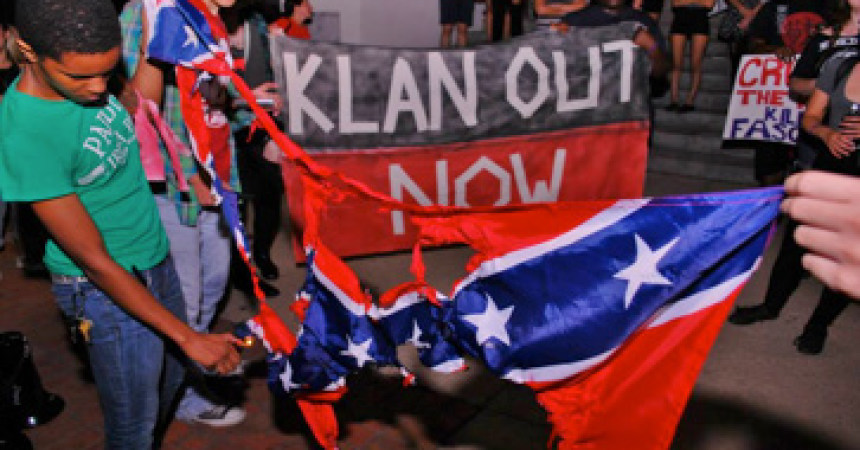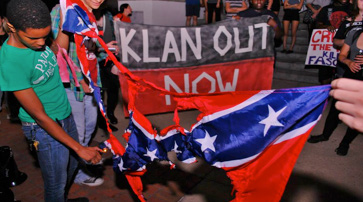
Youth movement making push to fill void of Black leadership
By Haylee Bell
Outlook Writer
While there is concern among African Americans about who exactly they could turn to for leadership, there is a spurt of activism that indicate that millennials are actively building awareness on the social justice front.
At no time was activism for equality higher than during the Civil Rights movement of the 1960’s. During that era, activists rallied the nation to stand up against injustice — some even risking imprisonment for their cause.
But since the assassination of Martin Luther King, Black leadership has been questioned. As the answer is being sought, countless activist organizations have sprung up but none has engulfed the nation like Black Lives Matter.
The organization first came into the national spotlight for its stand after the shooting of Florida teenager Trayvon Martin by a White neighborhood watchman. The movement by the group of mostly college-age to the 30-something demographics instantly inspired youth across the nation to follow suit.
“The Black Lives Matter Movement is just one chapter in a very long history that is the Black liberation movement,” said Regina Joseph, one of several area college students who chose to identify themselves as organizers of Students for a Democratic Society.
The millennials have one effective tool that their predecessors didn’t, relying on social networks. Following the Martin incident, they used tags such as #BlackLivesMatter to develop a network of followers. Young activists such as Patrisse Cullers, Opal Tometie and Alicia Garza have been behind the social network movement to organize protests.
In 2013 Robert L. Johnson, the founder of BET commissioned an online survey that asked 1,002 Blacks “Which of the following speaks for you the most often?”
The results said 40 percent said that no one speaks to them, 24 percent said that Rev. Al Sharpton speaks for Black people and 11 percent said Reverend Jesse Jackson.
Sharpton heads up the National Action Network organization. Jackson is founder of the National Rainbow Coalition.
Locally, Rev. R.B. Holmes, president of the local National Action Network,suspects that the inability to find a clear-cut leader is due to the lack of interest in the movement.
“I think people are not as engaged and courageous as it relates to social justice and the advancement of Black people,” Holmes said. “We have become very passive and inactive when it comes to challenging police and persons who are working against the economic and educational survival of people of color.”
Holmes said there is also a lack of courage and compassion for leadership within the Black community.
“Back in the day the Civil rights leaders were willing to die for freedom and system. April 4 was the 48th anniversary of the assassination of Dr. Martin Luther King Jr. He was killed because he believed that justice was worth dying for,” said Holmes.
“Today too many social activist and civil rights leaders have been bought off. We can’t consistently speak power to truth when your hand is consistently out for a paycheck, a grant and satisfied being ‘the spook who sits by the door.’ ”
But the dwindling numbers remain obvious.
“Before it was the abolitionist movement, then we had the Civil Rights movement, after the Civil Rights movement in response to that it was the Black power movement. Ever since then, it’s been kind of a drop in radical militant Black people,” said Joseph.
Some of the problems that hinder the growth of activism could be found in the drugs and gang activities in some Black neighborhoods, Joseph suggested.
A unified message could also help develop more interest in the Black movements, Joseph said.
“We’re not at a point right now to be like ‘that’s the leader, and I don’t think we need to be at that point right now. We don’t have a unifying message. We’re kind of all over the place.”
As good as social media has been in the youth movements for equality, Joseph also believes there is a downside because of the lack of face-to-face interaction. Not only that, but without interaction organizing a movement could be difficult, she said.
“You can’t do anything if you’re not organized, and don’t know how to organize,” said Joseph.
Joseph encourages young activists to study the movements of the past and learn the different tactics that had an impact.
“You have to be able to look into history and say this is what people did and that didn’t work out let’s do this.”
No matter how large the youth activism movement becomes, the senior leadership can’t be left out, Joseph said.
“As long as groups like SDS and other student organizations are dedicated to get those students we’ll get there, but a revolution doesn’t get built in a day it takes a real long time.
“The good thing about those older generations is that they have a lot of knowledge, but the good thing about younger people is that we can apply what they did right and see what they did wrong and do it better.”








